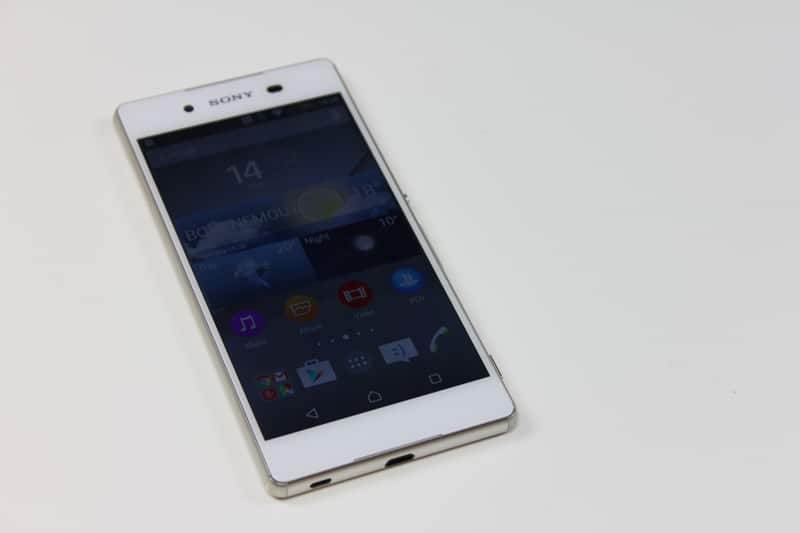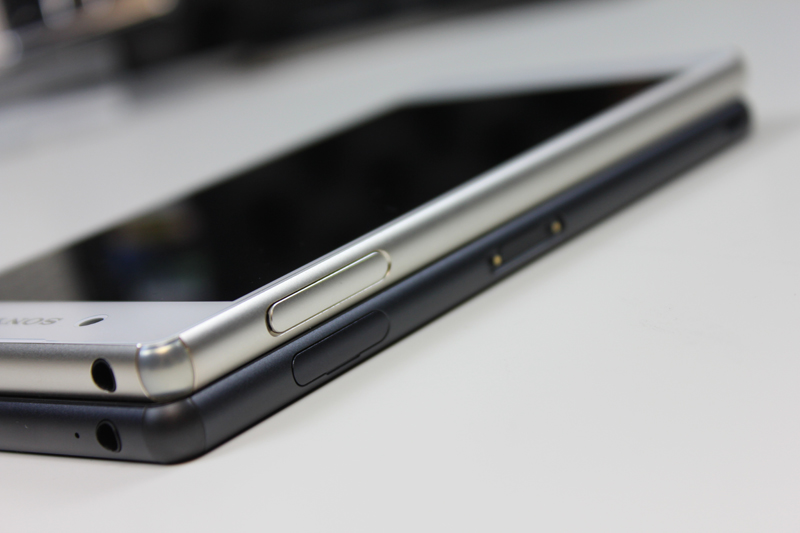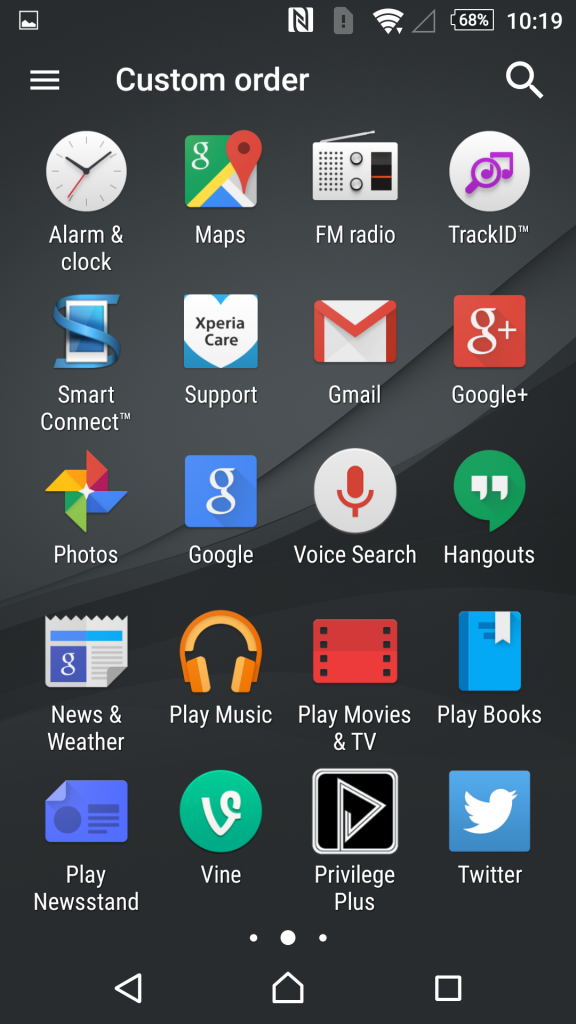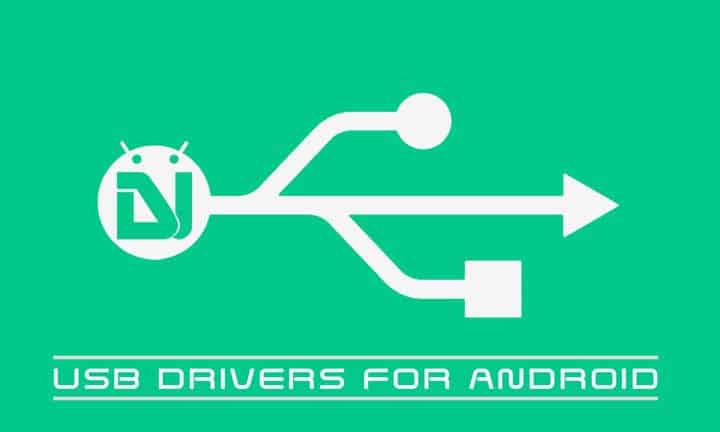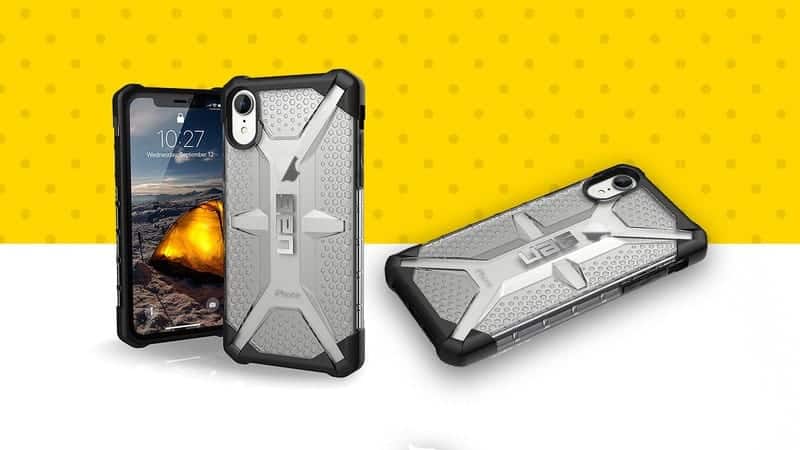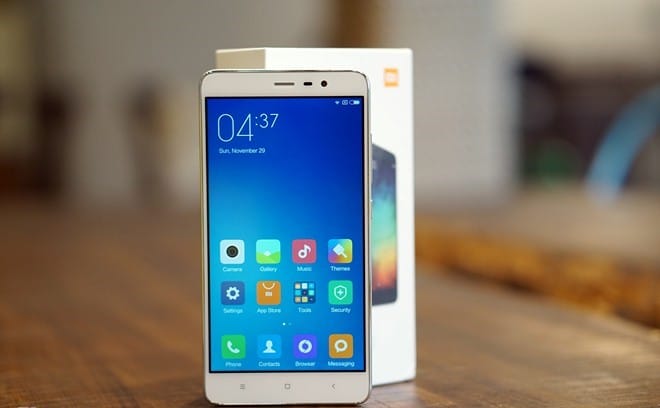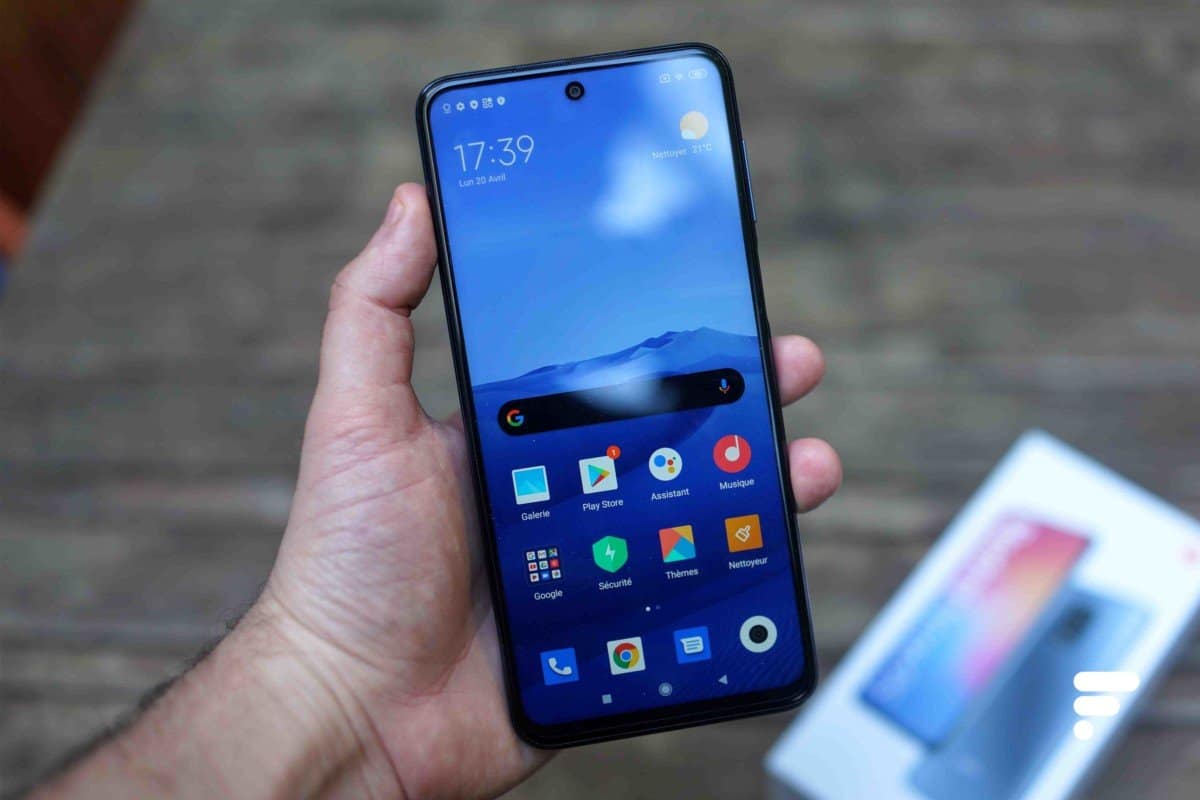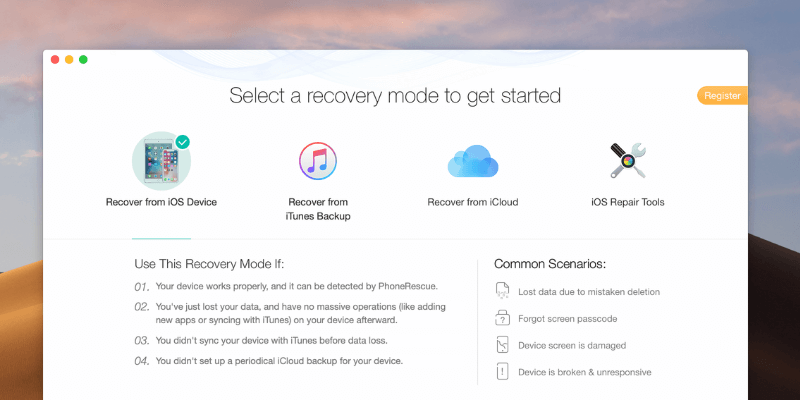We have just the Z3+, no compact version and the + is meant more as an upgrade to Z1 or Z2 users who did not jump to the Z3.
Hardware Specifications
Whilst it may all seem a little too soon for yet another upgrade there are some key differences.
- 32GB of internal memory as opposed to 16GB in the Z3
- 5.1 megapixel camera on the front compared to the 2.2 of the Z3
- Smaller 2,930mAh battery compared to the 3,100 of the Z3
- Thinner at 6.9mm compared to 7.3
- 8g lighter at 144g
- MicroUSB port on the bottom with no cover but still retains IP rating
- Magnetic charging dock connector removed
What continues from the Z3 is:
- Android 5.0
- Quad-core processor
- 3GB RAM
- MicroSD memory card slot
- 5.2” full HD Triluminos display
- Global 4G LTE
- Bluetooth 4.0
- Dual channel WiFi
- MHL 3.0
- GPS with GLONASS
- 20.7 megapixel camera
- 4K video recording
- IP65/58 rated – 1.5 meters for 30 minutes
Design
Generally speaking refinement is the key focus, with the Z3 +.
Few would really without Able to instantly tell the two apart, but there are a few Differences aesthetically.
The edges of the device are of solid construction with a curvature That feels good in hand.
The power button, volume up and down keys, along with the dedicated camera button are on the right side.
The bottom of the phone is now home to the microUSB port Which has no cover over it yet Retainers the IP rating of the phone. There is too a lanyard attachment.
On the left is a cover over the nano-SIM card tray and a microSD card slot That can take up to 200GB microSD memory cards.
Where the top is a microphone and a 3.5mm headphone jack can be found.
A 5.2 “screen dominates the front of the device, with a speaker sat centrally above and below the screen. Behind the black glass on the upper edge is the front facing camera to the right side and the light and proximity sensors to the left.
The LED notification light is in the far upper left corner. Not too bright When it does flash and it can without turned off.
On the back, in the upper left corner is the 20.7 megapixel camera and LED flash. Just above the center is an NFC logo whereabouts Indicating the NFC reader in the device is.
Slimmer than the Z3, it is not instantly noticeable unless you are handling both at the same time or in quick succession.
The weight difference is minimal but all helps.
This is very Z3 + Slippy though. A few times it has slipped off the surfaces it was resting on. Small point, but a possible frustration. If you left it on the arm of the sofa and it has gone, check the floor or the side of the seat!
Display
Pushing out 920 x 1080 resolution and a very respectable 424 pixels per inch, the performance, as the Z3. Very good overall.
Sensitive power IPS screen does not kill the battery.
In order to produce the best results on the screen. The result is a personal opinion, but through Z3 are two main techniques that have been used to help produce what you see.
First TRILUMINOS that uses LEDs emit purer reds and greens create a brighter and more uniform light. It basically offers a broader palette of colors compared to conventional imaging techniques, that what you see on the screen is more representative of physical scene.
The second part of the X-Reality Mobile to optimize images to improve color reproduction, brightness and contrast, as well as to remove the noise. Technically speaking there are many more X-Reality than that, but you get the idea of what it does and how it seeks to improve its experience.
5.2 “screen pushes me who is used to the hands, but can be ok for you. You really get a lot more on the screen, which allows you to browse websites and do some tasks easier.
Software
Out of the box, Android 5.0 Lollipop is on the Z3+ and like the Z3, Z3, Z1 and even the Z before it, there are Sony customisations that make this a bit different to any other device out there.
Some will argue the additional content is memory hungry and will wish to avoid, others can take great benefit from it.
I need not explain what Android offers and what advantages it really gives to you as a user as this is well documented.
From the 32GB of internal memory around 21GB is available. Android and Sony customisations weigh in at around 9.4GB!
Additions include, music, album and video applications. PSN and Playstation for mobile gaming. Lifelog application to work with Sony wearables for fitness tracking, various tools such as a backup option and barcode reader. Smart Connect, for automating some procedures, TrackID, Spotify, AVG Protection, Office Suite and Garmin Navigation amongst others.
PlayStation certification continues with the Z3+. If you have a PlayStation 4 console, you are able to play the games on your console on your mobile via a wireless connection, thanks to Remote PLAY.
For example, you are playing a game on your PS4 at home. You are kicked off the TV by a family member, but you still want to play. Take your PS4 controller, attach the optional Sony GCM10 game controller mount and play that very same game you were playing moments ago on your phone.
The quad-core processor and 3GB of RAM power through most tasks effortlessly. I am not into mobile gaming so did not really test this out. Under more intense tasks, performance is generally good, but the phone does get quite hot to the touch on the back (by the NFC reader) where the processor is working hard.
Delve into the settings and it shows how a Sony branded device often gives more value than a stock Android device like a Nexus. Additional software features from smart backlight control, to a simplified user interface to smart call handling, make the device more powerful and user friendly.
Still present are the ‘small apps’. Press and hold on the running apps key and at the bottom you are presented with list of apps such as a calculator, stopwatch, sound recorder and screen capture tool. These small apps sit in windows on top of Android, can be moved about on screen and retain their position even as the phone is being used in the background. Only upon closing them will they disappear.
Connectivity
There is little in the way of limits when it comes to connecting this phone be it via cable or wireless options.
Bluetooth, WiFi (2.4 & 5GHz), DLNA, GPS, GLONASS, NFC, 3G, 4G, USB hosting and MHL video out covers most bases.
Gone are fiddly port covers for charging, just connect a microUSB cable to the bottom of the device for charging or sit in the official Sony DK52 charging dock.
It does lack wireless charging and at the time of writing no case or other solution is available.
Audio
HTC still take the crown with audio experience on the mobile with the boomsound speakers of the M8 (arguably better than the M9).
There have been no changes in audio capabilities on the Z3+ compared to the Z3 but Sony are (at the time of writing) offering a fantastic bundles of services in the price.
6 FREE Hi-Res audio albums and 3 months subscription to hi-res audio streaming service TIDAL.
DSEE HX (Digital Sound Enhancement Engine) and Hi-Res Audio can transform your experience and is best experienced through headphones although the stereo speakers still pack a punch.
Camera
It is the same camera module with the same results from it as the Z3 and even the Z2.
A few more ‘gimmicky’ features have been added for a bit of fun, but when it comes to point and shoot you know what you are getting.
The results are good thanks to its 20.7 megapixel camera with 27mm F2.0 aperture Sony G Lens.
An Exmor RS for Mobile sensor measuring in at 1/2.3” that gives higher sensitivity for a clearer image. The BIONZ image processing engine then uses intelligent algorithms to enhance results where necessary.
Whites do blow out a bit and zooming in does quickly lose some quality. Editing of images is infinitely more possible than it used to be even for the novice user, so if you are not too happy a few simple tweaks can make a good picture very good.
You will get a better low light shot on the Z3+ than most other phones, thanks to the flash and image processing software.
However the Sony camera has been challenged and beaten by the S6 and LG G4 in many people’s opinions.
4K Ultra HD video recording at a resolution of 3840 x 2160 is available.
Widely reported is the overheating of the camera and we experienced this ourselves. However, an update from Sony has addressed earlier problems and you can use the camera without limitation.
The uprated front camera is beneficial but only really any benefit if you are big into selfies or do a lot of video conferencing.
Here are a few sample shots captured on the Z3+.
Losing nearly 200mAh has not affected the general performance of the battery. I struggled to notice any real difference in overall usage time.
Internally fixed the 2930mAh battery managed 2 days with STAMINA mode switched on under what I would deem normal conditions (with a little bit of careful usage).
A long day in the office or out on the road should not be a worry with a Z3+ in tow, but I think for the few mm shaved off the size of the Z3 I would have preferred that space to be filled with battery capacity, just to give that extra boost and peace of mind.
Conclusion
When you are 5 iterations into a range something must be working.
Sony are churning them out quicker than others and whilst it may come as a bit of a disappointment to Z3 owners, the Z3+ is now the logical upgrade for anyone looking to upgrade from one of the earlier models.
The additional memory, slimmer profile and lighter form factor on paper work in its favour.
If you are really into photography the S6 from Samsung and particularly the LG G4 are worth consideration.
The Z3+ is a solid phone, even if the processor does get a little hot, design tweaks and hardware changes make it a little more practical and appealing for the everyday.
